Section 1 Subsystems
Memory -
Memory performance is very important on a motherboard, especially when you have a CPU with multiple cores and threads. If you have slow memory your cores and threads can become starved for data to execute. To test memory performance we run Sisoft’s SANDRA. These two combine to not only give us accurate numbers but to validate each other. For testing at stock speeds the memory is hard set to 1600MHz while overclocking testing is done at the highest stable speed for the voltage of 1.65v this is due to the different memory dividers for each CPU. As such, the memory speeds will vary greatly. This means that the overclocked numbers are a little misleading and while they can show a trend are really only included to show if a board has a problem with memory performance at high clockspeeds.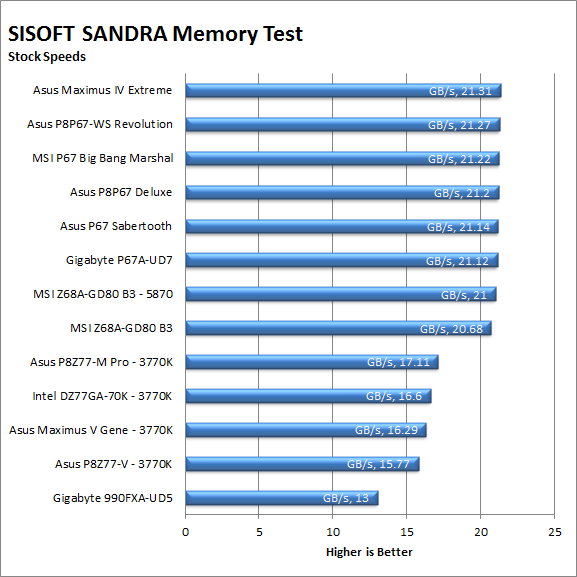
Memory performance on the P8Z77-V is not exactly where we would expect it to be for a Z77 based board (running Ivy Bridge). We found it at the lower edge of our Z77 boards that we have tested at least at stock speeds. When we overclocked the CPU things evened out and it fell right into line with the other Z77 boards we have tested. This was a little odd considering the fact that we did not change the memory divider here; just the multiplier on the CPU. We imagine that this issue will be corrected in future BIOS releases though. In practical terms the lower memory bandwidth could mean slower transcoding performance and performance issues when working with a lot of image files in an image editor (the more pictures you have open the greater the memory impact).

Drive performance -
Drive performance is also one of the major subsystems that goes to make up the performance of a motherboard. For our testing we use Sandra and AIDA64 again. We only test with single drives for each type of controller present on the motherboard (unless it is a professional product where we will use RIAD 5 and/or 10). We have also begun using a Seagate PS-110 USB 3 external HDD and a Kingston HyperX USB 3.0 Flash drive for our USB 3.0 performance. As a side note, we include the overclocked numbers here to make sure (again) that you are not going to see a major drop in performance due to minor instabilities at high clock speeds.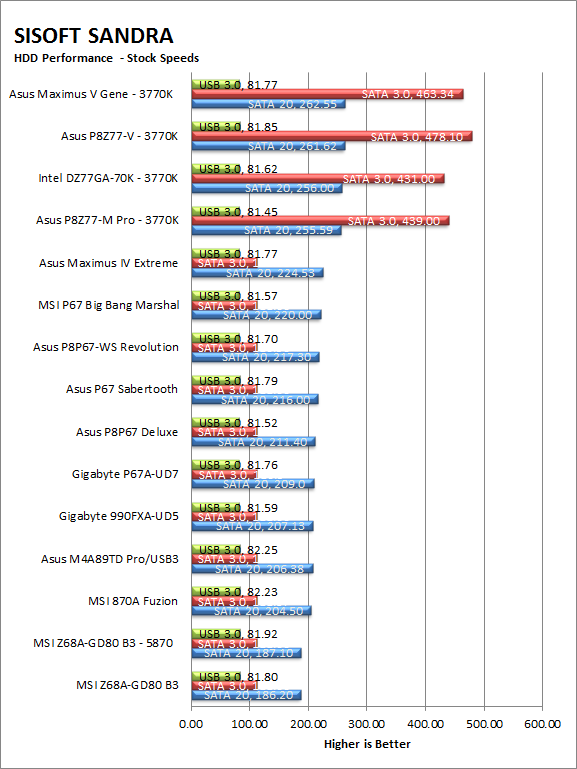
The HDD performance is right up with the rest of the Z77 board (in fact a little faster than some we have tested). This should help to balance some of the memory performance issues we saw at stock speeds. Of course that does not work for every program or application, but for many it will. In practical terms solid HDD (ok SSD) performance means you should have faster application launches, level loads and also faster file transfers as the drive are able to write faster. 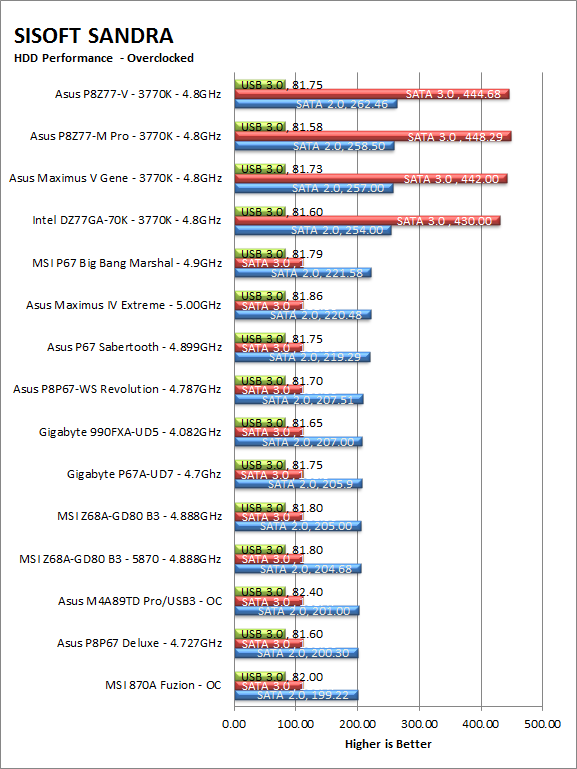
For USB 3.0 performance you also get an extra bonus when using an Asus board. If your USB 3.0 flash drive or enclosure supports it you can get some extra performance from it using the USB 3.0 Boost that Asus gets with both the Intel and ASMedia controllers. On the P8Z77-V we saw a nice jump in performance on our Kingston DT HyperX 64GB flash drive. Normal performance put it at about 254MB/s while running under turbo mode got us speeds as high as 273MB/s. This performance is better than SATA 2 SSD performance and that is quite impressive.

Power -
Power efficiency is another of those misnomers that we get caught up in. We hear about idle states and power gates. But what does that mean to you and I? On the surface having power management that reduces idle power sounds great and can be a benefit to someone that leaves their system on for long periods of time (and inactive) but how a system handles power under load and the delta between the two states is often more important than the idle power usage numbers. We use only P3 Kill A Watt instruments for measuring power. 
Asus has been utilizing hardware based energy processing units in their motherboards for a while now and have been one of the better companies when it comes to power efficiency. Granted at the top of their line up you are not going to get a lot of these tools, but at that point you are really pushing your system anyway and are probably not looking for that. Still during our testing runs with the EPU software off we saw pretty good power usage numbers. The P8Z77-V was not the best for power draw, but it was one of them. When we ran at stock with the EPU set to power saving we were able to really drop the idle power numbers down, but all that went away when we started using the system 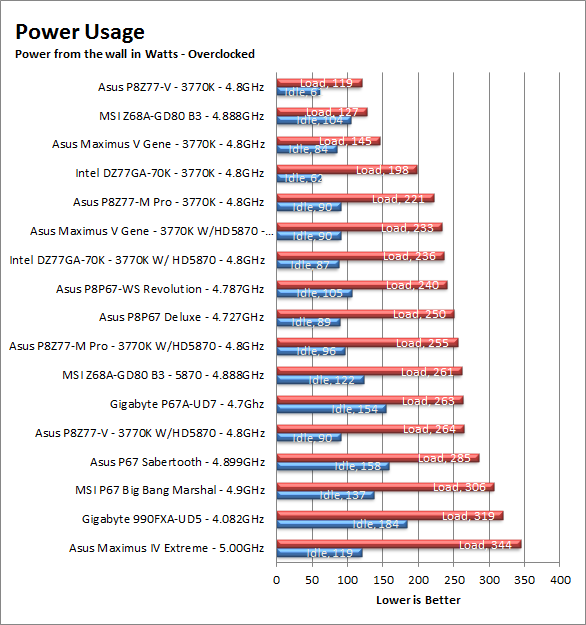
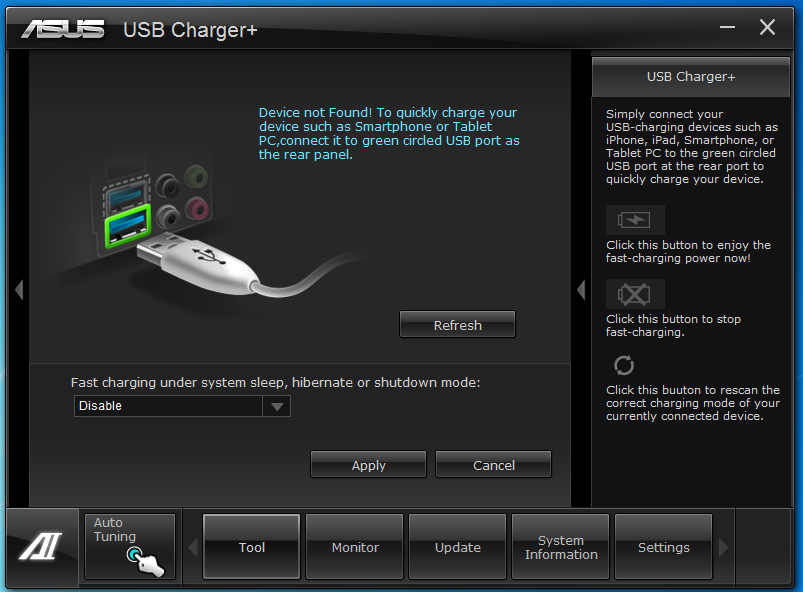 |
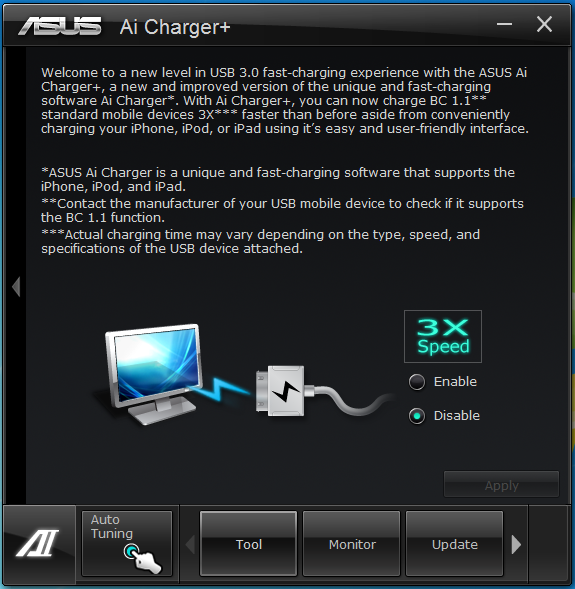 |
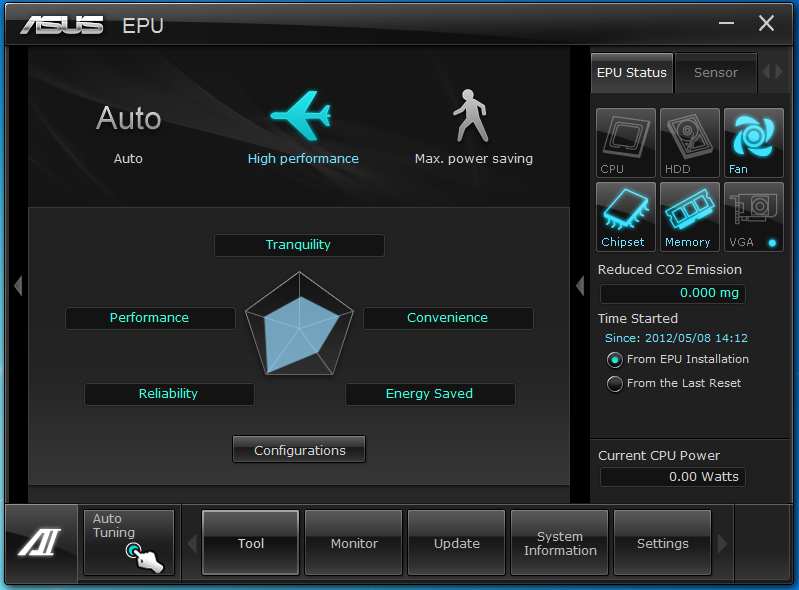 |
Cooling (Board Level) -
Board level cooling is an important factor in product performance and longevity. Components like the chipset, VRM modules and even capacitors need to be kept relatively cool to prevent failure. As these parts are made of silicon, they have a thermal breakdown threshold; or melting point. At that temperature the actual transistors built into chip will begin to deform and break down. Granted, the threshold is often very high, but you still need to make sure that components stay away from this level of heat for longer product life. 
The cooling on the P8Z77-V is better than what we saw on the –M Pro and even the Maximus V Gene, still you might want to make sure you have good airflow over is in your case of choice. We saw a decent effect even from the hot air coming from the HD 5870 we use as an add-in GPU. Of course as we showed you in our Video of AISuite II you get some extra cooling options when you run any Asus board. 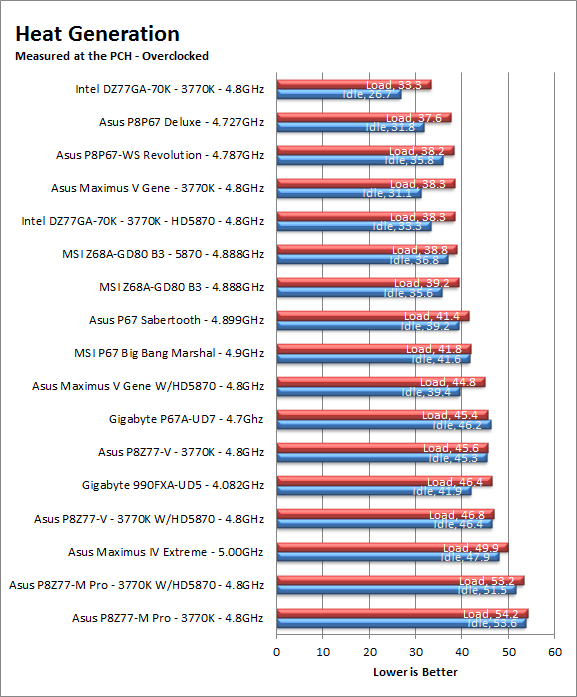
FanXpert 2 is a handy utility for tuning your cooling on the P8Z77-V. After running the auto tuning function you can change your cooling profile based on what you are doing. If you need a quiet system, you can have that just like you can have all of your fans running full blast when you need it as well. 
Audio -
Audio is highly subjective. What we find pleasing may sound “off” to you. That is always going to the problem with testing audio; results will vary too widely depending on the tastes of the listener. However, there are ways of measuring the audio output with an objective ear. There is also the issue of audio causing performance issues in gaming and video playback. The reason this is a potential source of concern is that all onboard audio CODECs (Compression/Decompression) are CPU controlled. This means that while the audio chip controls the audio levels and effects of the audio the actual work is done on the CPU. Usually this will not be a problem with today’s powerful CPUs. Even the lower and consumer level products can handle high-end audio these days. But again there is the chance that a bad design or software will hinder your system and performance. On the other side the limits of board space, cost, etc will also prevent the level of audio quality you can get from an add-in board. We test all audio parts with three media types, Movie (DVD), MP3 Music, and Gaming. These are pushed to our Tec On model 55 Tube Amp to see if we can detect any signal issues in the reproduction.
The audio on the Asus P8Z77-V is handled by a Realtek ACL892 8-Channel audio controller (well really more of a CODEC). This is enhanced by DTS Ultra PC II and DTS Connect and features Asus’ absolute pitch audio enhancement for lossless Blu-ray disk audio playback. During usage the audio was good, but not award winning. The post processing software does add a little life to it, but it is not the same as you get with hardware that can handle the audio in the first place. Still it is good to see that Asus is working to improve this often overlooked area in computing.
Networking -
This one is something that is a requirement anymore. If you have a computer, the chances are good (like 99%) that you are also connected to high-speed internet. With this you need a good and solid LAN chip to make sure that your data flows properly out and back.
On the Asus P8Z77-V (and the rest of the –V line up including the Deluxe and the Premium) you have a couple of networking options. For wired networking you can use an Intel 82579V Gigabit Ethernet controller that is going to give you some great performance and reliability. However, if you do not want cables running all over the house you also have an option for a Qualcomm wireless controller. This will get you single 2.4GHz band support with speeds up to 150Mb/s (802.11 b/g/n). 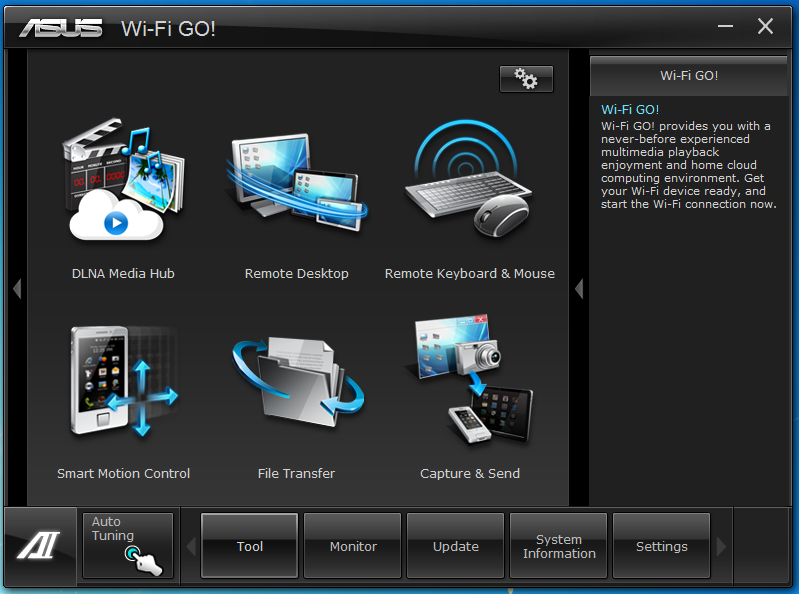
If you use the wireless you also have the option to use Asus WiFi Go! software and setup your system as a DLNA streaming media station. You can also control your system remotely using the WiFi Go! app available from both iTunes and the Google Play store. You need to search for Wi-Fi GO! Remote to get what you are looking for. You will also need to download the server utility from Asus’ website so you can get the wireless on the P8Z77-V working the way it is supposed to.
 |
 |
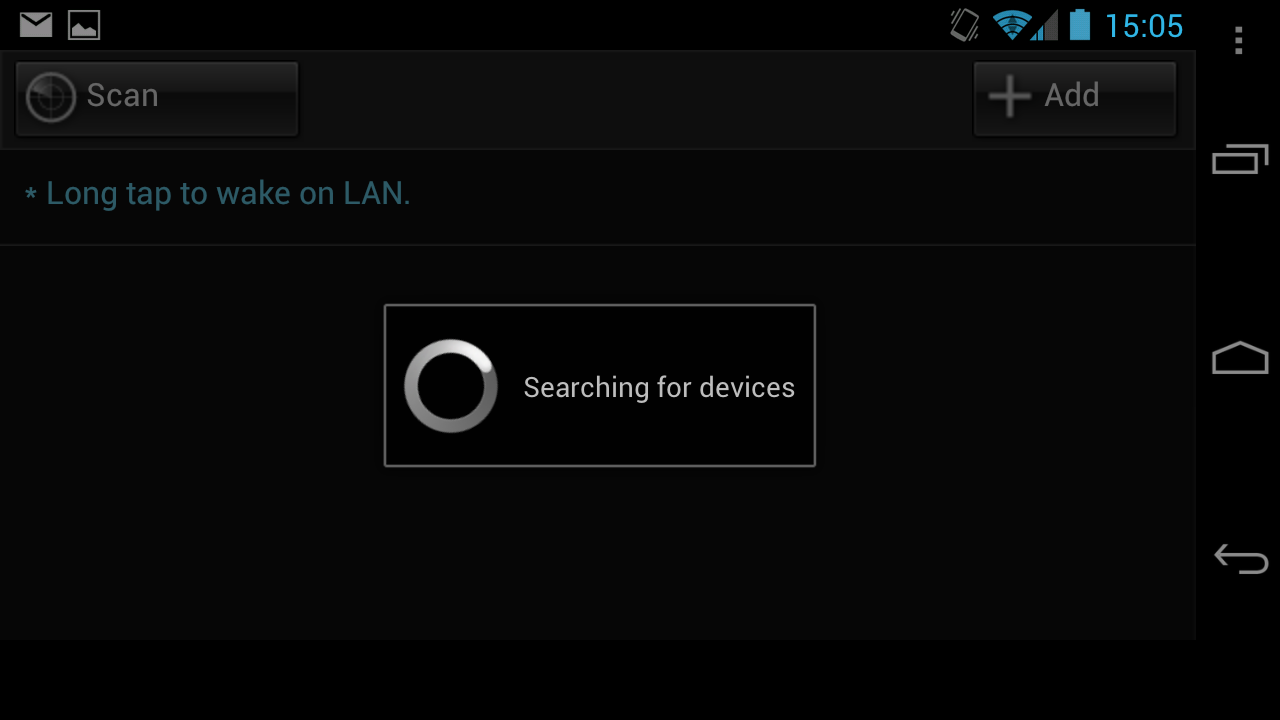 |
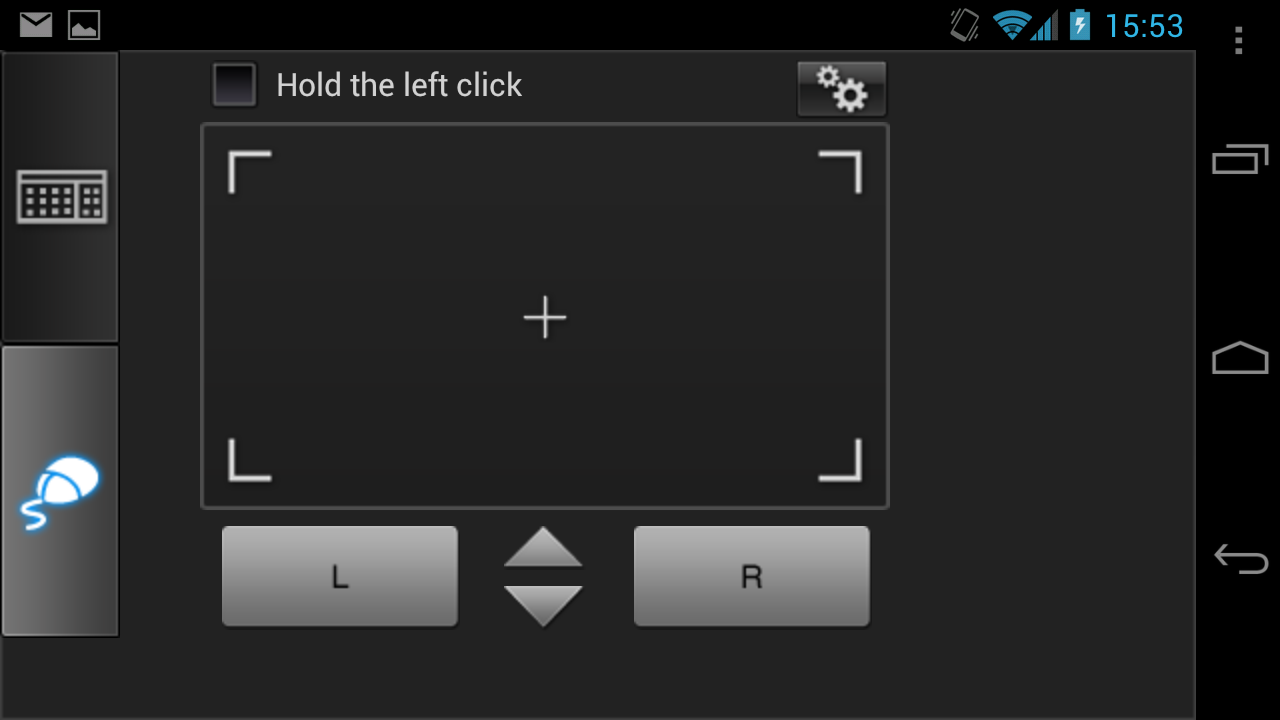

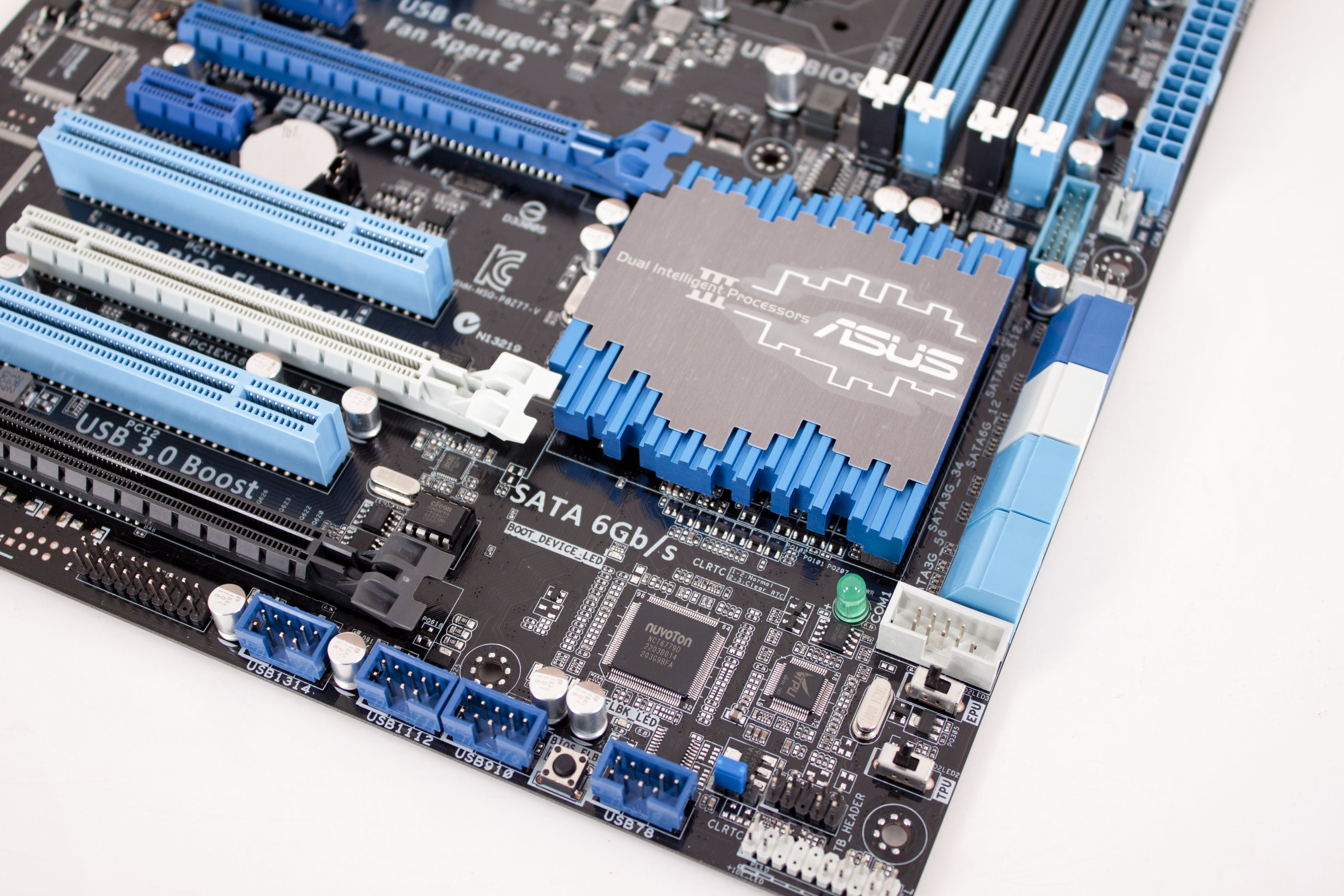 So now that we have covered all of the
So now that we have covered all of the 

